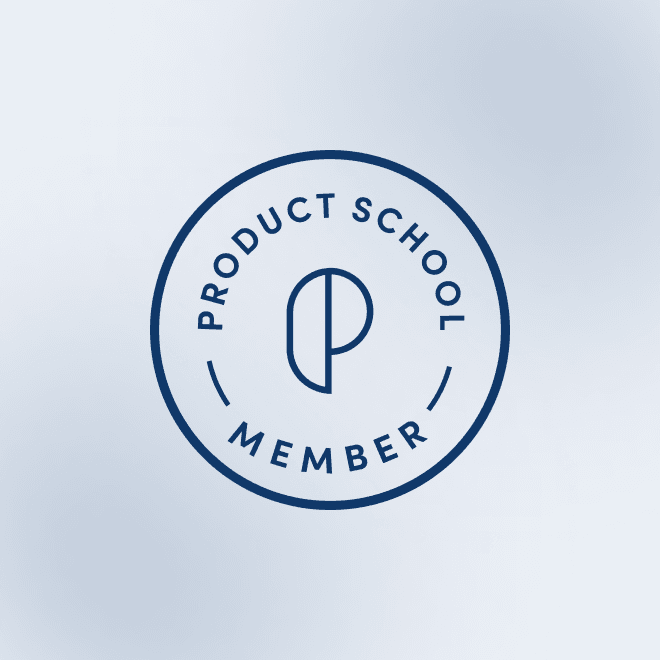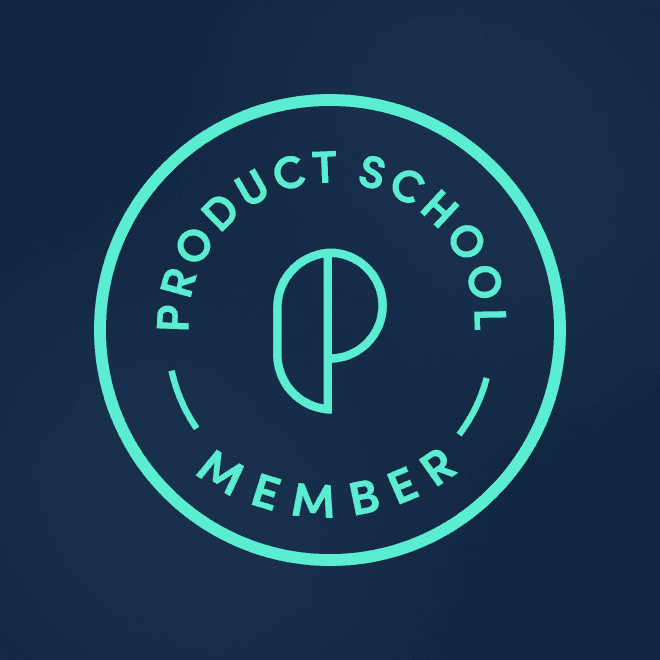Updated: May 6, 2024- 9 min read
Writing is a great way to boost your personal profile, show off your knowledge, and give back to the product community. Whether you’ve been thinking about writing your own blog, or even starting that book you’ve been dreaming of publishing, we’ve got the insider knowledge on how to write for a product-based readership.
Part 1: Writing
Why Write?
If you’re here, chances are that you already have your own answer for this. But just in case, here’s a quick list:
It’s fun!
It raises your professional profile, and sets you up as a voice of authority on the topics you’re speaking about.
It’s a powerful tool for job hunting, as it can catch the eye of potential recruiters.
It gives back to the product community. When you’ve got a wealth of knowledge and valuable learnings from years in the industry, you can help lift up others by sharing them.
It’s a great mental exercise. Looking back at your own experiences can help you to unpack them and look at them from a third-person perspective.
Knowing Who You’re Writing For
Luckily for product people, understanding who your target audience is a well-worn skill!
Treat your readership the same way you would your product’s target market. Get to know them by being ‘all up in their spaces.’ That might mean joining an online community, seeing what they’re talking about on social media, or just keeping an ear out for the conversations that are happening around you.
“Where Do You Get Your Ideas From?”
The one question every writer hears!
If you’re driven to write, there’s a chance you’ve already got plans for where you want to begin. Or perhaps you know all the benefits of writing, but you can’t quite put your finger on what there is to talk about.
For writers in the product world, there are a few sources of information:
Finding questions and answering them.
There are plenty of things that are talked about time and time again in the product world, such as ‘How do I break into Product?’ ‘What can I expect in a Google interview?’ ‘What’s the best way to get alignment from challenging stakeholders?’ If you can add your unique perspective to these questions, you have the opportunity to provide valuable answers.
Writing your experiences.
‘Write what you know’ is a cliche for a reason.
Being aware of what conversations are happening around you.
When you’re a part of a community or an industry, it’s almost impossible to escape the more important topics, conversations, and controversies!

Find Your Style
Finding your writing style can be tricky for new writers, but the more you try the more naturally it’ll come to you. Here’s how you can help the process along:
“Bring your personality to work” when appropriate.
Don’t just relay information; tell a story. Good writing is memorable writing. Readers want more than just to be taken from point A to point B, they want an experience the same way users of products do.
The reader is more important than the writer. Remember who you’re writing for (hint: it’s not you!)
Read your work out loud. This not only helps you to catch pesky spelling mistakes, but it helps you to figure out how natural your writing sounds. It should flow easily and roll off the tongue.
What Is SEO?
SEO stands for Search Engine Optimization, and when you’re just starting to learn how to write, you might see references to it floating around.
SEO wants to make sure that your content is…
Relevant
Easy to read
High-quality
Not dangerous/spammy
If it’s not something you’re already familiar with, and you’re not writing as part of a marketing campaign, then don’t worry too much about it.
As a first-time writer, the only thing you have to worry about is writing good content for real people. Leave SEO to the marketers.
However, if it’s something you want to learn more about, Neil Patel is a great source of learning, and SEMrush is a powerful tool to try out.
General Blog Tips:
You may have written essays in high school or college, and if you did, that’s a great place to start! But there are a few things about blogs that it’s good to know.
Attention spans are short. Most people are unlikely to read every single word of a blog article. Sometimes they want to just skim for information, or before they read in-depth just to see if it’s what they expect. Keep paragraphs short of making this easier for them.
Use sub-headings to break up information. This is good for SEO, and also for making your blog more readable.
Beware of using copyrighted images. If you’re going to include images you don’t own in your article, make sure they’re not copyrighted. Don’t just take them from Google image search. Get them from sites like Unsplash or Pexels.
General Book Tips:
If you’ve been thinking about writing that book, you’re not alone! Book writing is a great way to get your name out there and make something of your own.
As a writer of eBooks, here are the things I wish I’d known before starting:
Identify the key insights you want people to take away from your book. After reading your book, no one is going to remember all 50,000+ words! Write down the main points that you want to convey. This will give you direction and focus as you write.
Write the ‘boring’ bits first. You’re less likely to give up halfway if you leave the more interesting parts till the end.
Use post-it notes or Miro to keep track of your chapters and which version/draft you’re on.

Ideas To Get You Started:
So you know you want to write, but you’re not sure where to start? That’s normal! Here are some ideas you can use to start you off…
Write a review of your favorite new app/software
Write the story of how you got into Product Management
Debunk a common PM myth
Write about a time that you failed, and what you learned from it
Part 2: Getting Published
You’ve done the hard part…now it’s time for the easy part! Getting published.
There are two routes to go down when getting published. Self-publishing your own blog, or pitching your articles to existing publications.
The Self-Publishing Route
If you’re writing for fun, Medium is a great place to start. It allows you to focus on writing without having to set up your own website. When you’re ready to submit to publications, there are plenty of top-tier Medium publications to choose from (more on that later.)
Curious about Medium? Check out Product School’s Medium publication.
If you’re writing for your side project or launching your own product, you might need more functionality than Medium offers. In that case, WordPress is more customizable. It’s more of an investment, but offers much more customization.
Getting Published on Medium
This is the method that I recommend the most for first-time writers who have never been published before. Here are the three steps for how Medium submissions work.
Step 1: Identify the Medium publication you’d like to write for. Make sure you’re a good fit for them, and they’re a good fit for you.
Step 2: Contact the admin and express your interest in publishing with them. It’s better to do this when you’ve already published a few pieces yourself so that they can see your style.
Step 3: If they’re interested, they’ll add you as a writer and allow you to submit pieces.
Check out our list of Top 15 Blogs for Product Managers
Pitching Your Articles to Publications
Spend time looking at the blog you’re hoping to feature on. What topics have they already covered at length? Do they reach the same audience you’re hoping to reach? Make sure you’d be a good fit for them.
Most blogs have guidelines. Minimum word count, format, topics, etc. They should send you these during the first conversation.
Be open to making changes. You may have accidentally mentioned a competitor or gone over the word limit. So be open to making the changes they need for publication.
Check their exclusivity policy. Usually, publications will ask for 2 weeks of exclusivity, after which you’re free to self-publish the blog.
Hint: Almost all publications require your work to be unpublished elsewhere. This avoids Google flagging them/others for duplicated content. Keep that in mind when pitching an article you’ve already written.

The 2 Most Common Beginner Mistakes in Pitching Publications
1. Not paying attention to the blog guidelines: This causes delays in the publication schedule if you have to go back and make drastic changes. It doesn’t have the editor of that blog rushing to work with you again if you continually miss the mark.
What to do instead: Read the guidelines before writing your article and again before sending it. There might be something important that you’ve forgotten. 1 minute to double-check can save you some embarrassment!
For example, check out Product School’s Guest Blog Guidelines
2. Not telling them who you are: “Hi I’m interested in writing for you, what’s the process?” leaves me with more questions than answers and sends you to the bottom of my priority list.
What to do instead: Tell me who you are. Introduce yourself, your experience in product, and what you’d like to write about/what areas of the product you’re most interested in. Including your LinkedIn profile is a great way to verify your identity and qualifications.
How To Write For Product School
If you’re a Product Manager or someone with experience in the tech industry, we want to lend our platform to you!
Our blog reaches over one million unique visitors yearly! 🤯 So your article will be in good company.
If you would like to contribute to the blog, please review the Product Blog contribution guidelines and contact blog@productschool.com!

Updated: May 6, 2024





